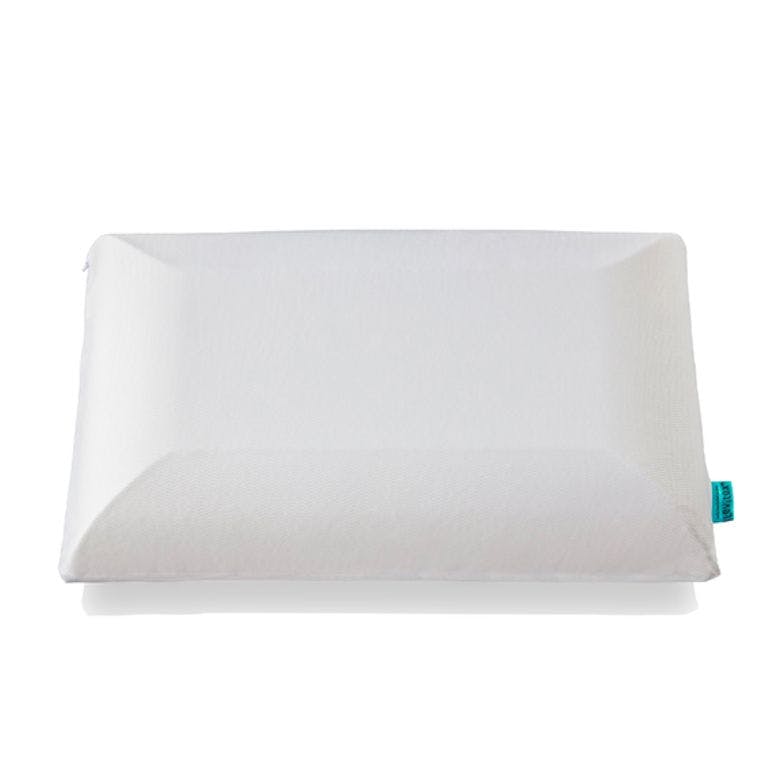How To Improve Posture, So You Walk Taller
5 minutes read
Have you ever thought about how to improve your posture? You’re not alone. In fact, according to a survey by Urban Massage, over 70% of people confessed to being unhappy with theirs. And unsurprisingly, one of the main culprits of bad posture right now is technology. “The biggest challenge to posture right now is the use of mobile phones,” says James Leinhardt, a posture expert at Levitex. “People spend so much time with their head dropped forward-looking at screens, and it’s causing an increase in a condition known as Dowager’s hump – a permanent curve in the spine and neck because of time spent with our heads and shoulder slouched,” he continues.
According to Leinhardt, the average head weighs between 5-6 kg but is supported by only 20 small muscles and seven tiny vertebrae. “Imagine holding onto a bowling ball for most of the day. That’s the same pressure we’re putting on our necks for hours at a time, which, naturally, is causing many posture problems,” he adds.
Does Bad Posture Affect Height?
“There’s a common misconception that bad posture results in people getting shorter,” Leinhardt explains. “This is not the case because what happens is that with lousy daytime posture, you develop a slump, which means you don’t stand as tall.
“Over time, your body adjusts to your daytime posture, and this causes a change in individual biomechanics. For example, muscles require tension to work properly, but if you lean forward, certain muscles are always in tension, so they will lengthen to adjust to a normal. The result is a more curved spine, meaning you will appear shorter.”
Common Posture Issues that Affect Height
Human spines are naturally curved, but we immediately appear shorter if we slump because of bad posture, and over time that becomes our new normal. On the other hand, posture follows the least resistance line, so you will naturally find the most comfortable position for your body which may not always be the most beneficial in the long term.
Can Correcting Your Posture Increase Height?
“Focusing on your posture won’t make you taller, but you can achieve your maximum height,” says Leinhardt. “You can straighten your spine as much as possible through good posture, which means that in a standing position, you can achieve your maximum height naturally.”
How to Improve Your Posture
With posture, people always refer to sitting up straight or standing correctly, and they always seem to speak about daytime interventions. But the longest time we spend doing anything in 24 hours is sleeping, so it’s essential to consider the position that you are sleeping in when it comes to improving your posture.
“We work for 13 years of our lives and have things like ergonomic seats to help us at our desks. But we spend 26 years of our lives sleeping, which means a massive amount of time is spent lying down in bed. So you can optimise posture effectively during this time without doing very much. The Dreamer position is the sleeping position that has been proven to be best for night-time posture – it’s semi-foetal, side lying, and the best for a neutral resting spine,” Leinhardt explains.
We recommend trying the below exercises to keep your posture in check.
The Forward Fold
A standing stretch that helps to relieve tension in your spine, hamstrings and buttocks, as well as stretching the legs and hips. You should feel your whole back opening and lengthening when doing this exercise. To start, stand with your big toes touching and your heels apart by two inches. Next, place your hands on your hips and fold your body forward. Then, point your hands towards the floor and bend your knees slightly before tucking your chin into your chest and allowing your neck and head to rest. Continue this pose for one minute.
The Cat Cow
This exercise helps to stretch and massage your spine at the same time. It’ll also work to get rid of tension in the shoulders, neck and torso. To begin, move onto your hands and knees on the floor with your weight evenly balanced. Next, look up and inhale, lower your abdomen towards the ground and stretch your spine. When you exhale, arch your spine towards the ceiling and tuck your chin down into your chest. Keep this movement up continuously for one minute.
The High Plank
This pose helps to banish pain and stiffness throughout the whole body whilst strengthening shoulders and glutes simultaneously. It also helps to develop better core and back strength and is one of the essential exercises for improving and maintaining good posture. First, place yourself into a plank position on the ground, and make sure to lift your heels and raise your hips in line with the straightness of your back. Next, clench your arm, leg and abdominal muscles, lengthen the back of your neck, and look down towards the floor. Maintain this position for one minute, and keep your shoulders back, and chest open the whole time.
What to Use to Help Improve Your Posture
Active Posture Basic Posture Brace, £34.95

Posture People Posture Correction Kit, £34.99

The Slumbar Company The Slumbar Back Stretcher, £27.99

Levitex Sleep Posture Pillow, £75

FAQs
Can you correct years of bad posture?
“Depending on the person, it isn’t always possible to address bad posture. This is true as we get older – conditions like arthritis limit our ability to exercise or stretch. But what we do say in healthcare, particularly with patients with long-term needs, is that we aim to preserve where we are and not let things deteriorate,” says Leinhardt.
“Posture is the eternal fight against gravity – it exists 24 hours a day, seven days a week. The trick to maintaining good posture is managing those periods when you don’t have to think about it. Even those with ergonomic seating rarely use it to its full potential every day. We all have preferences – like crossing our legs when we’re at a desk, but over time simple things like this mean we develop more and more asymmetry. This creates a new normal, and our perception over time makes us think we’re fully straight and symmetrical with good posture, but the truth is we’re not.”
How long does it take to improve posture?
The time taken to develop a lousy posture is generally the same as the time needed to make it good again – that’s why people with bad posture have the best chance of addressing it during sleep, and positive results can be seen very quickly.
Next read: The Best Antioxidants, According to Experts
Sign up for our newsletter
We will keep you in the loop for special offers, exclusive gifts and product news.

